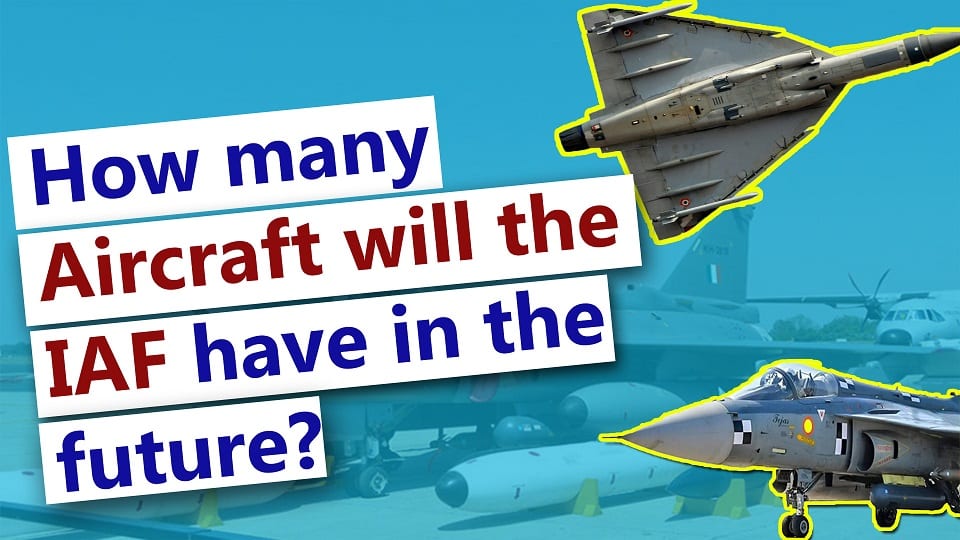Aerospace
In the future years, the IAF will have more powerful mixed fighter jets, with 70 percent made in India.

Every country’s defense is measured in terms of war machines and advanced technologies. As a result, the Indian air force is also keeping a long-term vision for constructing a strong fence along India’s borders and releasing some of the best fighter jets in its defense ground.
India is also developing its own fighter jets in order to become more self-sufficient in terms of economic benefits. However, it is not easy to develop fighter jets that can compete with western countries’ fighters such as Boeing, Dassult, Sukhoi, or Eurofighter. Every other fighter jet is more advanced and has already been tested in combat.
The next generation of aerial warfare technological breakthroughs are already taking shape in the form of unmanned systems, hypersonic combat aircraft, and laser energy weapons. It is almost redefining the concept of modern air and space warfare. How does the IAF respond to evolving threats and capabilities?
As a result, the Indian air force expressed interest in acquiring more fighter jets for its defense fleet in 2007. After several years, the IAF now has a plethora of options for procuring stronger jets for its fleet. Because of the research conducted by the Indian HAL, the Tejas aircraft was successfully launched. Other fighter jets are in the works and will be tested soon. However, the IAF can no longer rely on HAL to quickly develop jets for its squadrons because these aircraft may not yet be battle proven. It is possible that an additional technology that can stand and fight alongside other fighter jets will be required.
So the IAF has stated that it will continue to pursue developed foreign aircraft on Indian soil. This transaction is estimated to be worth around $20 billion. one of the largest contracts for the Indian air force
Aside from that, the Indian Air Force is looking for indigenously built aircraft, and they have already placed a large order with HAL, which will be delivered next year.
The IAF is currently planning 83 LCA, 70 HTT-40, two AMCA Mk-I squadrons, and five AMCA Mk-II squadrons. Furthermore, the LCH order and other developments in the helicopter fleet will allow for 400/450 aircraft. In the long run, the IAF will have the LCA variants AMCA and MRFA, as well as 56 C-295s for tactical airlift. There is no other commitment of 450 aircraft anywhere in the world. This depicts the IAF’s capability-building strategy.
It should be noted that China is already upgrading J-20 and J-31 aircrafts and developing new fighter jets with sixth generation capabilities in areas such as stealth and hypersonic weapons. China is leading the way in the aerial dimension of laser and AI-based precision warfare capabilities.
Clarity is essential for making significant progress on critical projects like MRFA. A policy quandary that stalls the timeline defeats the purpose. The proposed 114 MRFA must pass through such trails in order for the IAF to cement its formidable position in aerial warfare and to build an advanced aerospace industrial base.

Aerospace
Boeing Transfers Rocket Stage to NASA, Paving Way for Human Moon Mission

Boeing has achieved a significant milestone by providing NASA with the second core stage of the Space Launch System (SLS) rocket.
This crucial component, crafted at NASA’s Michoud Assembly Facility (MAF), is set to propel the Artemis II crew into lunar orbit, marking humanity’s return to deep space after a 50-year hiatus.
The monumental Boeing-built rocket stage, the largest element of the Artemis II mission, will embark on a journey aboard the Pegasus barge, traveling 900 miles to NASA’s Kennedy Space Center.
Comparison of two legendary aircraft B777x vs B747 aircraft:Click here
Upon arrival, it will be meticulously integrated with other essential Artemis II components, including the upper stage, solid rocket boosters, and NASA’s Orion spacecraft within the iconic Vehicle Assembly Building. This intricate integration process is a vital step toward the eagerly anticipated Artemis II launch, slated for 2025.
“Boeing-built products helped land humankind on the moon in 1969, and we’re proud to continue that legacy through the Artemis generation,” remarked Dave Dutcher, vice president and program manager for Boeing’s SLS program. “Together, with NASA and our industry partners and suppliers, we are building the world’s most capable rocket and paving the way to deep space through America’s rocket factory in New Orleans.”
NASA, Lockheed Martin Reveal X-59 Quiet Supersonic Aircraft:Click here
The delivery of Core Stage 2 marks a significant achievement in the evolution of the SLS rocket. Towering over 200 feet and powered by four RS-25 engines, this core stage, coupled with two solid-fueled booster rockets, will generate a staggering 8.8 million pounds of thrust. This immense power is crucial to launching Artemis II and future missions into the vast expanse of space.
The SLS rocket stands unparalleled in its capability to transport both crew and substantial cargo to the moon and beyond in a single launch. Its extraordinary capacity will facilitate the delivery of human-rated spacecraft, habitats, and scientific missions to destinations including the moon and Mars, ushering in a new era of space exploration.
-

 Travel1 week ago
Travel1 week agoAir India to Expand US Operations with Three New Routes After a Decade
-

 Travel2 weeks ago
Travel2 weeks agoWhy We Should Avoid These Stamps in a Passport
-

 Airlines1 month ago
Airlines1 month agoInvestigations Reveal Fake Chinese Titanium in Boeing and Airbus Jets
-

 Tech4 weeks ago
Tech4 weeks agoChina’s CATL Plans 1,800-Mile Electric Plane Launch by 2027
-

 Airport3 days ago
Airport3 days agoTop 10 Largest Airports in the World by Size
-

 Aerospace4 weeks ago
Aerospace4 weeks agoChina’s Fighter Jets Turn Wings into Autonomous Drones
-

 Airlines4 days ago
Airlines4 days agoAir India Rolls Out A350s for Delhi-New York JFK and Newark Routes
-

 Defence3 weeks ago
Defence3 weeks agoBoeing Enhances Chinook with New Engines and Block II Upgrades at $96 Million







